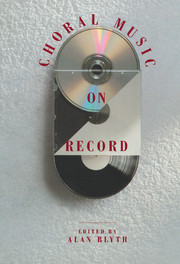Book contents
- Frontmatter
- Contents
- Preface
- Monteverdi: Vespers (1610)
- J.S. Bach: St John Passion
- J.S. Bach: St Matthew Passion
- J.S. Bach: Mass in B Minor
- Handel: Messiah
- Mozart: Requiem Mass
- Haydn: The Creation
- Haydn: The Seasons
- Beethoven: Missa Solemnis
- Mendelssohn: Elijah
- Rossini: Stabat mater Petite messe solennelle
- Berlioz: Grande Messe des Morts Te Deum L'Enfance du Christ
- Verdi: Requiem Mass
- Brahms: A German Requiem
- Fauré: Requiem
- Elgar: The Dream of Gerontius
- Walton: Belshazzar's Feast, Tippett: A Child of Our Time, Britten: War Requiem
- Stravinsky: The Wedding Symphony of Psalms
- Janáček: Glagolitic Mass
- Discographies
- Index
Mozart: Requiem Mass
Published online by Cambridge University Press: 02 December 2009
- Frontmatter
- Contents
- Preface
- Monteverdi: Vespers (1610)
- J.S. Bach: St John Passion
- J.S. Bach: St Matthew Passion
- J.S. Bach: Mass in B Minor
- Handel: Messiah
- Mozart: Requiem Mass
- Haydn: The Creation
- Haydn: The Seasons
- Beethoven: Missa Solemnis
- Mendelssohn: Elijah
- Rossini: Stabat mater Petite messe solennelle
- Berlioz: Grande Messe des Morts Te Deum L'Enfance du Christ
- Verdi: Requiem Mass
- Brahms: A German Requiem
- Fauré: Requiem
- Elgar: The Dream of Gerontius
- Walton: Belshazzar's Feast, Tippett: A Child of Our Time, Britten: War Requiem
- Stravinsky: The Wedding Symphony of Psalms
- Janáček: Glagolitic Mass
- Discographies
- Index
Summary
Mozart's last, sombre masterpiece, the Requiem in D minor K.626, has caught the public imagination as few other works, largely because of the mystery surrounding its origins.
The bare facts are now known: Count Walsegg von Stuppach, a passionate music-lover, commissioned the Requiem in the spring or summer of 1791, in memory of his young wife who had died earlier that year. Walsegg was a harmless eccentric whose practice it was to recopy works he had commissioned, in order to test his chapel-musicians' powers of deduction, and who seemed to derive much innocent amusement when flatteringly credited with their authorship. Hence his insistence on retaining the copyright of the Requiem so that it could not be published prior to his own first performance, thus spoiling his little joke. The contract between Mozart and the Count has recently been discovered, proving that their business together was above board and conducted with total propriety.
Nevertheless, the legends persist, and even today commentators are divided over the more colourful theory that Mozart had a premonition of his impending death, regarded Walsegg's ‘grey-clad emissary’ as a messenger from the other world, and became obsessed with the idea that he was composing the Requiem for his own funeral. Though a letter in which Mozart confides these fears to Da Ponte has long since been discredited as a forgery, it is significant that the account given by his widow Constanze to contemporary chroniclers seems to corroborate this view.
In the event, Mozart did not live to finish the Requiem. This placed Constanze in a delicate position, since a large amount of money had already changed hands, and more was outstanding subject to the Requiem's completion.
- Type
- Chapter
- Information
- Choral Music on Record , pp. 102 - 113Publisher: Cambridge University PressPrint publication year: 1991



